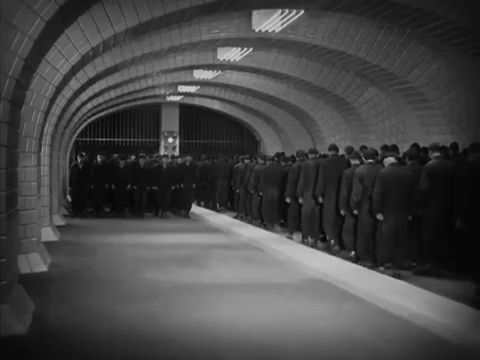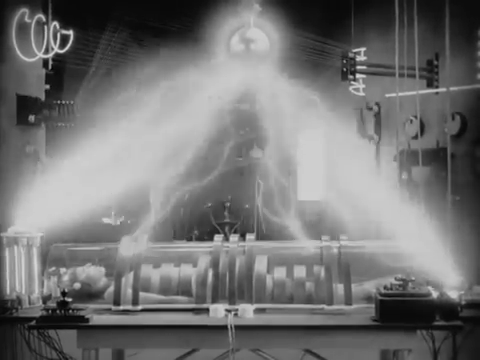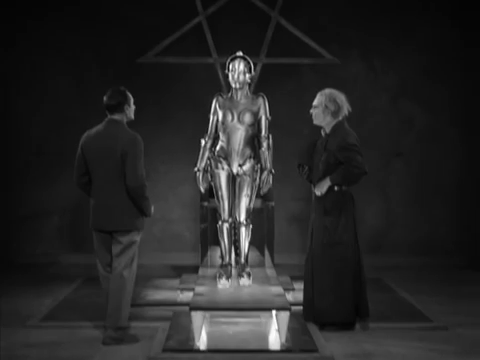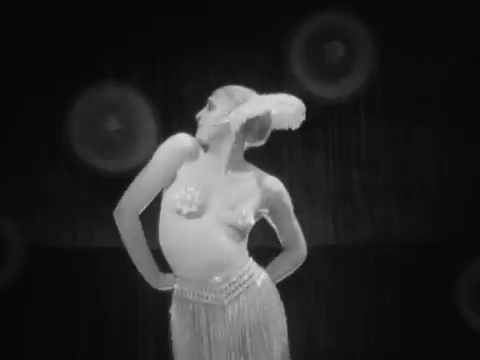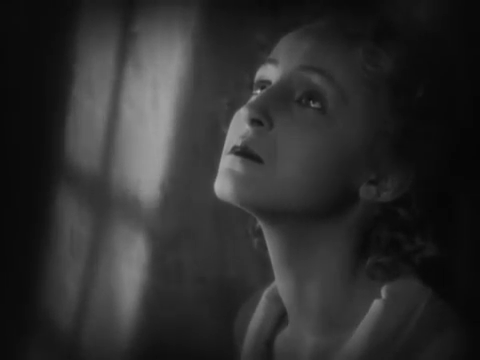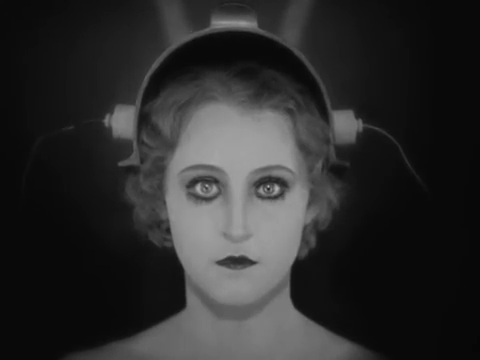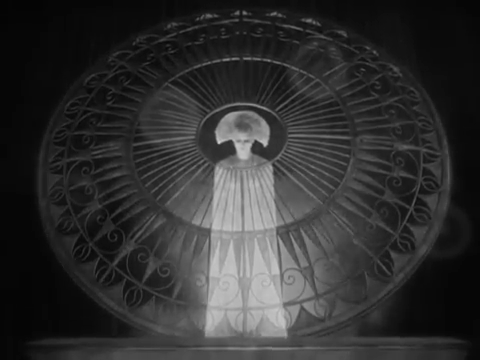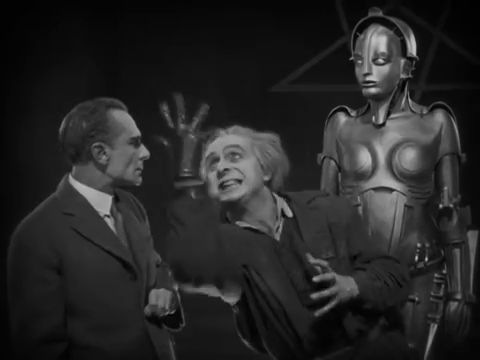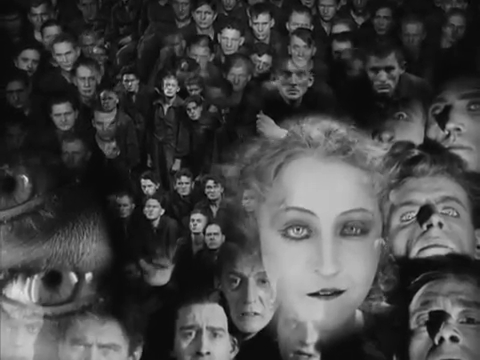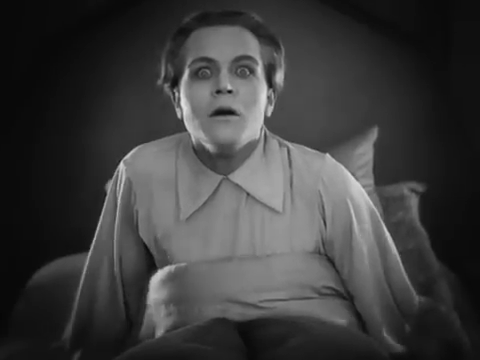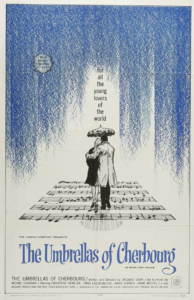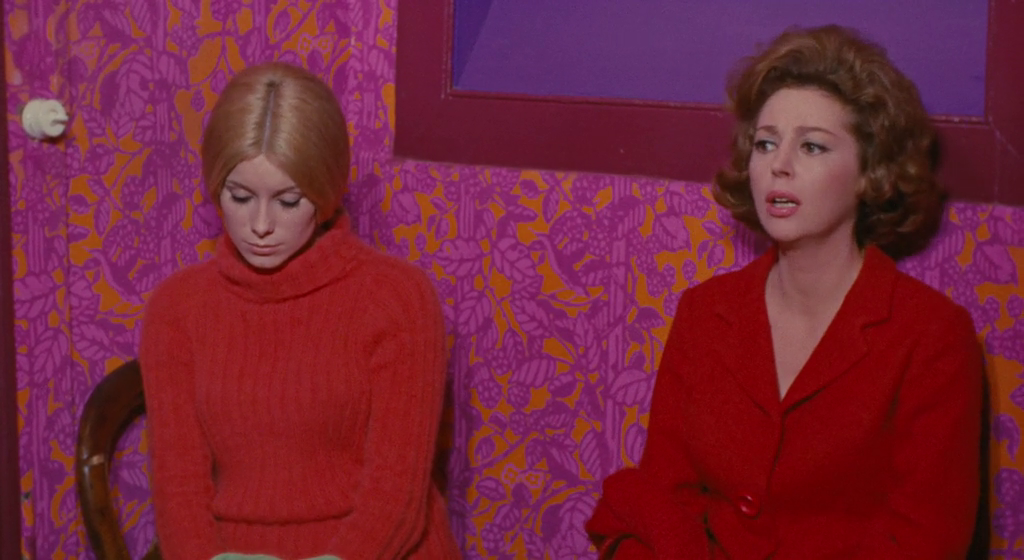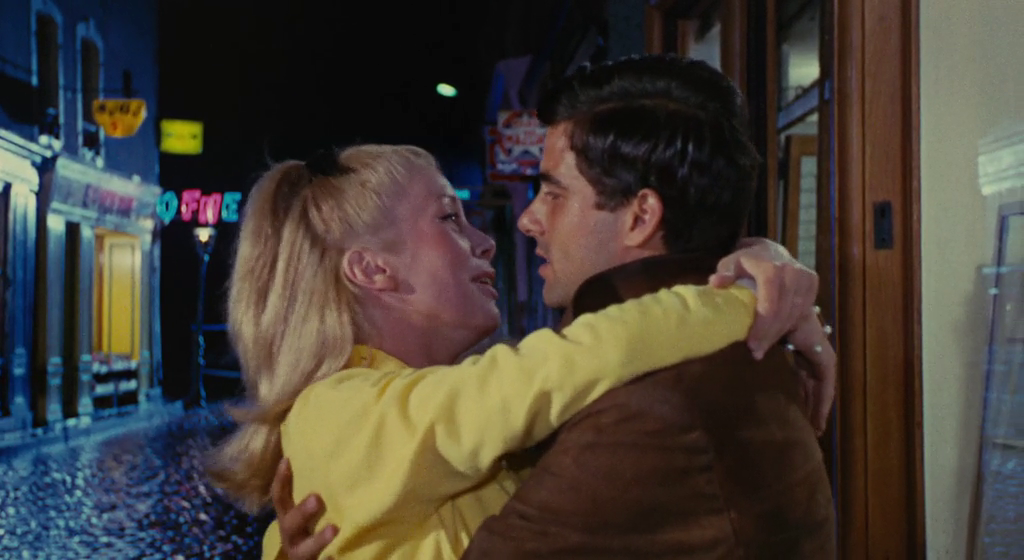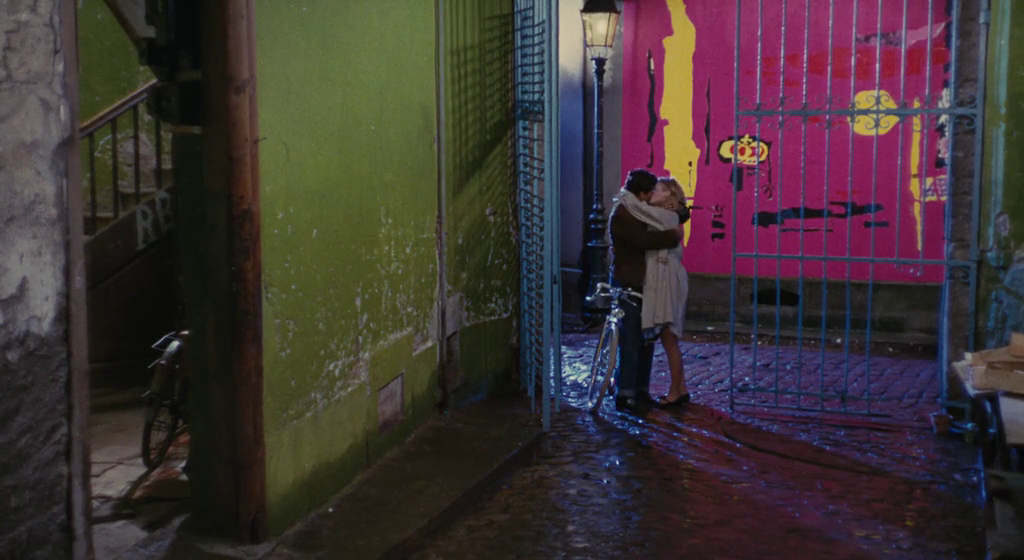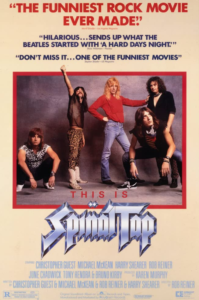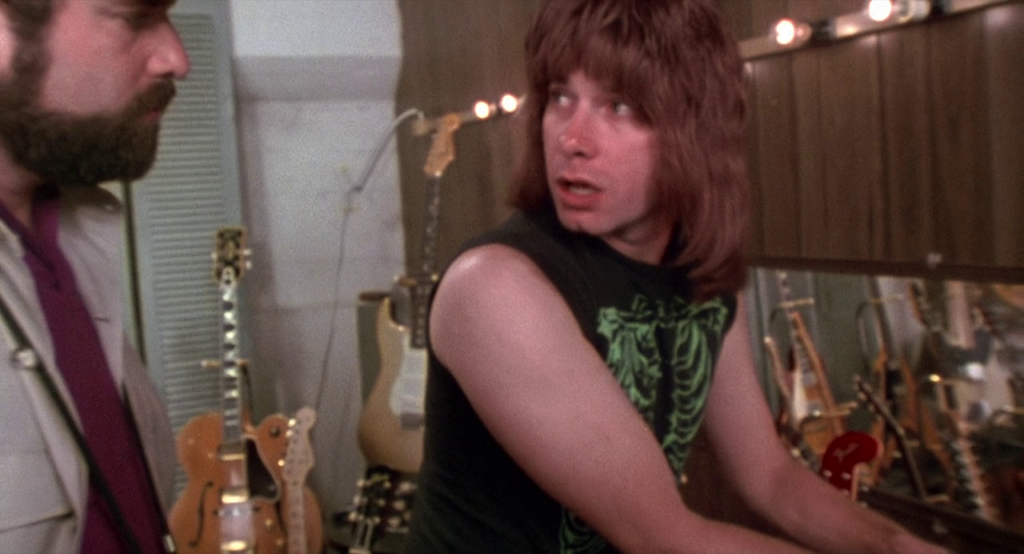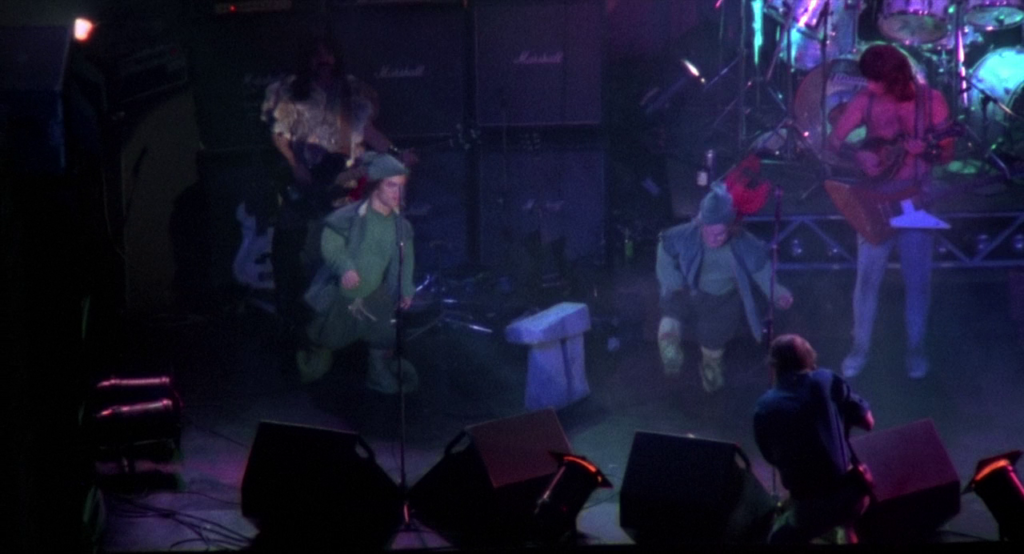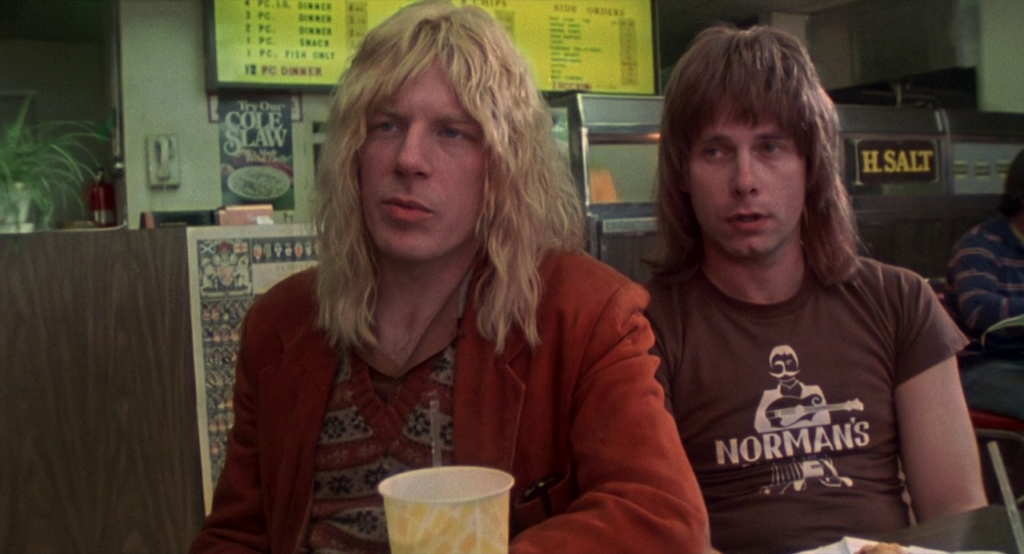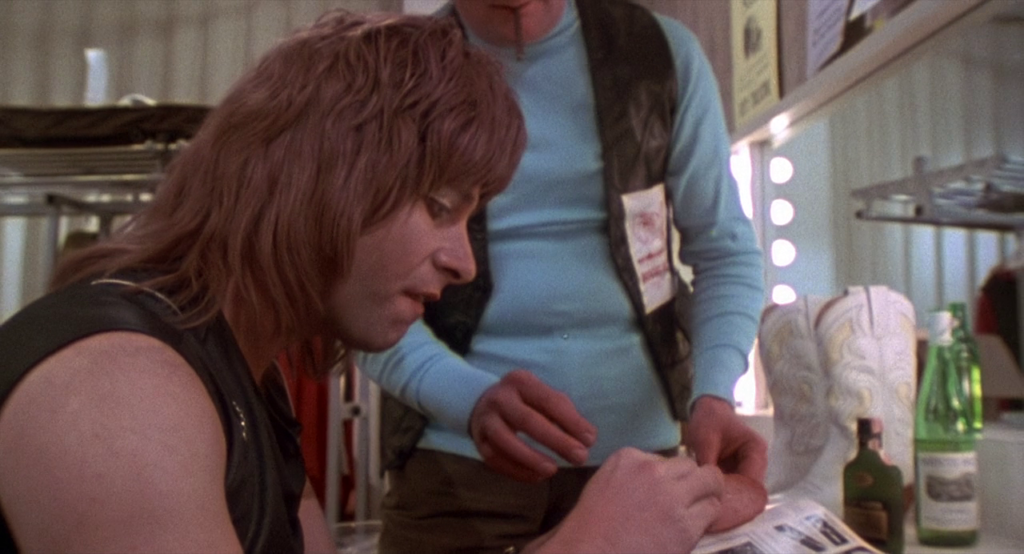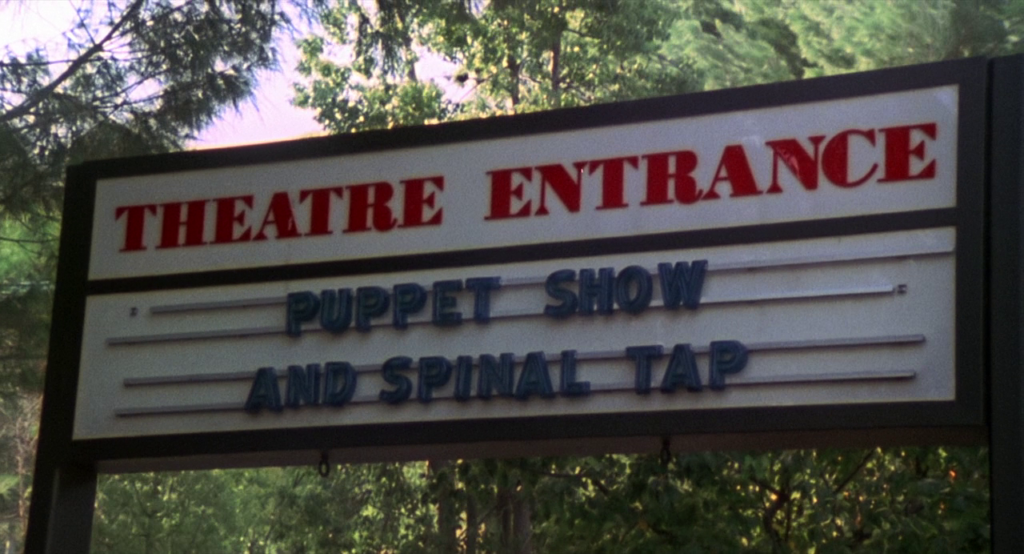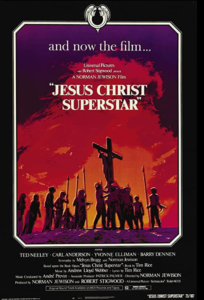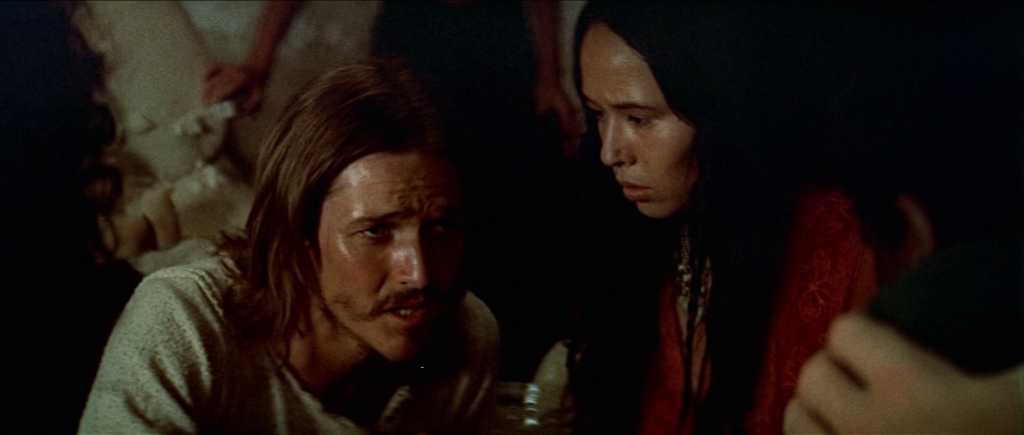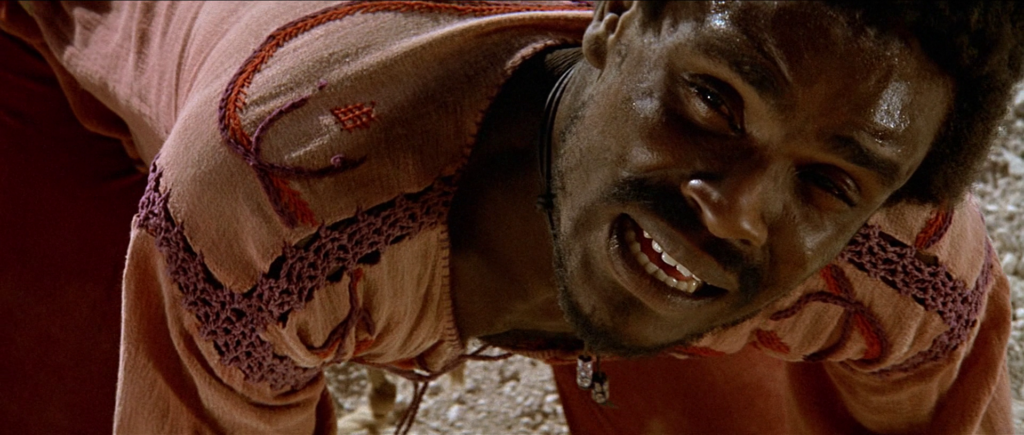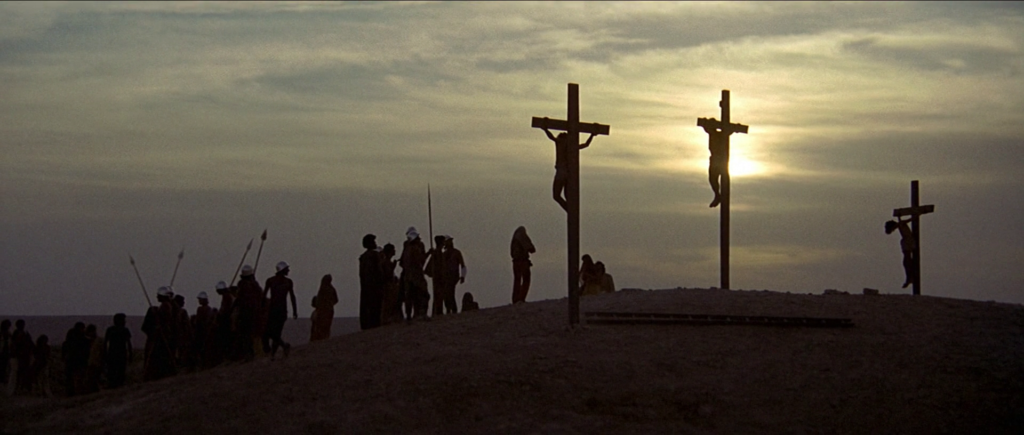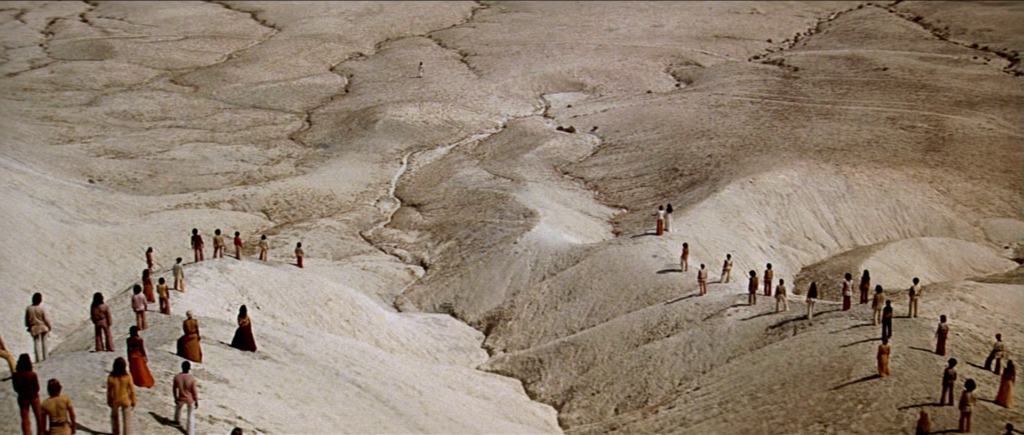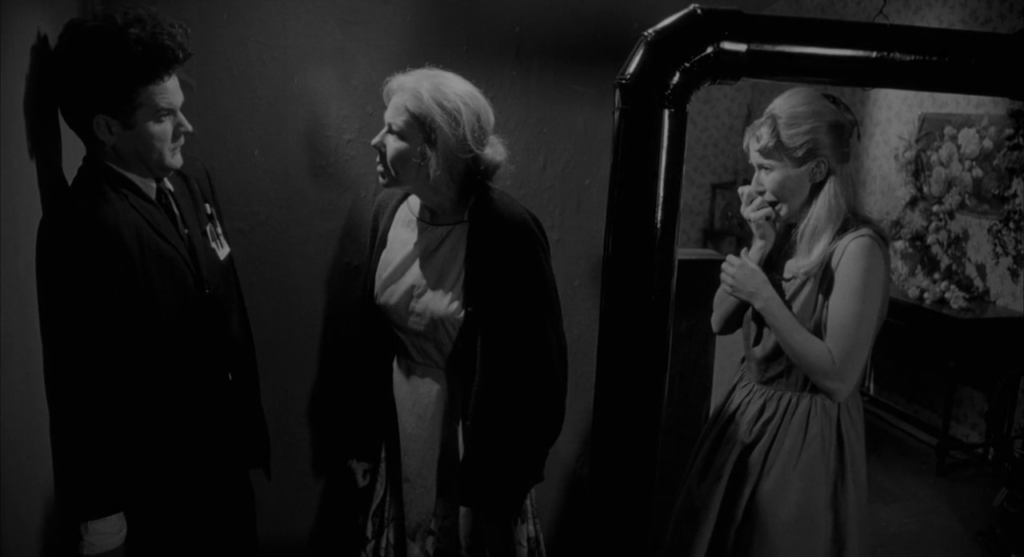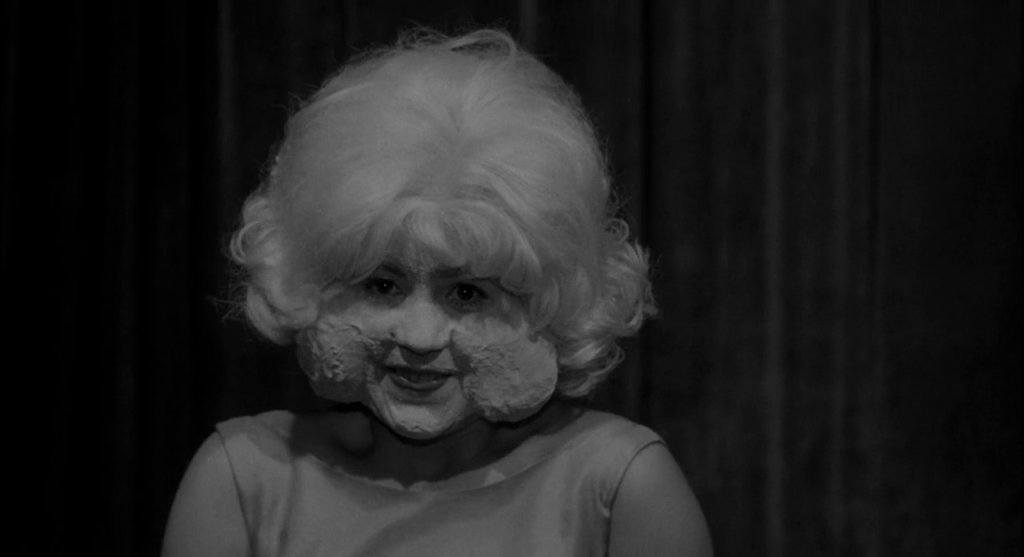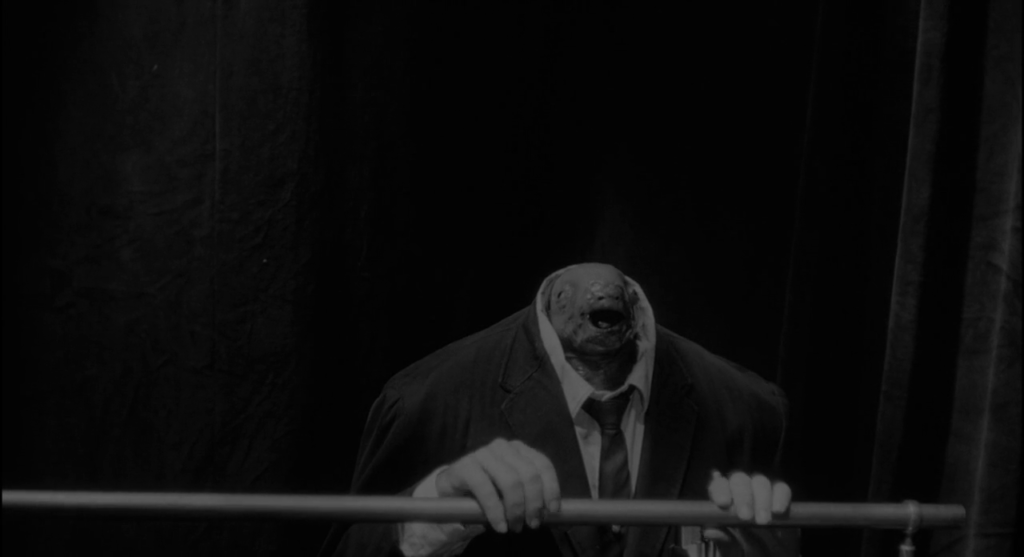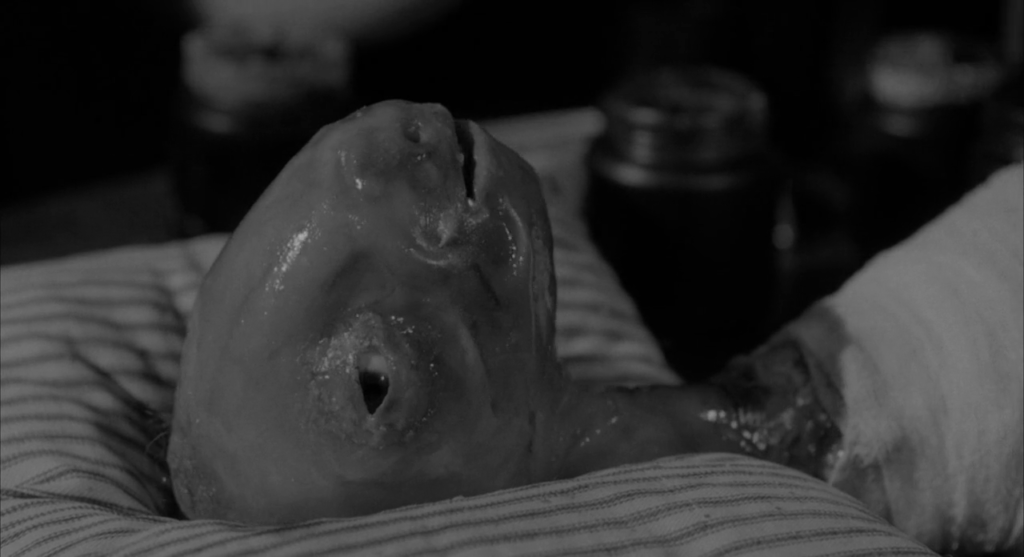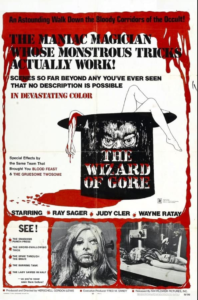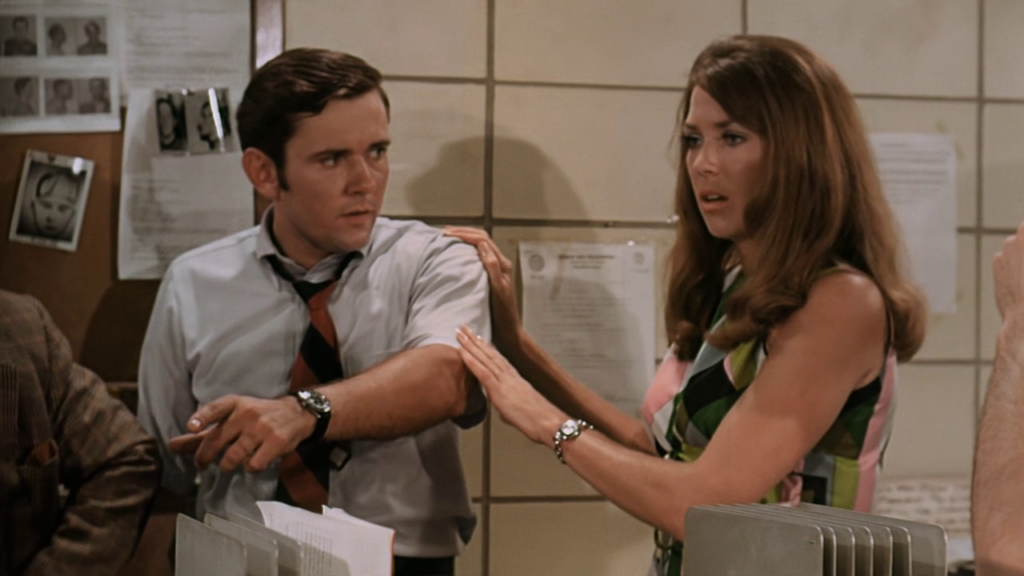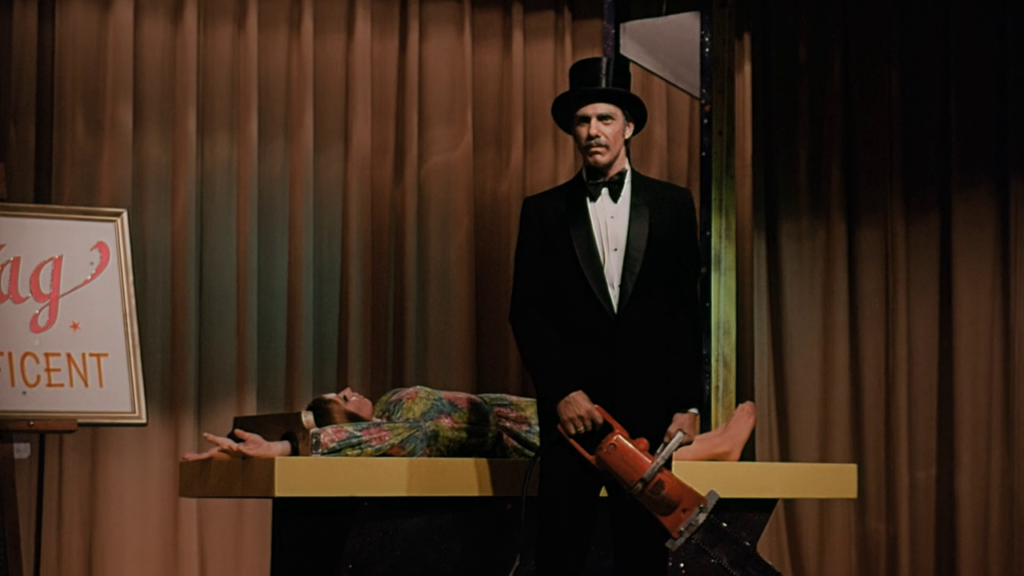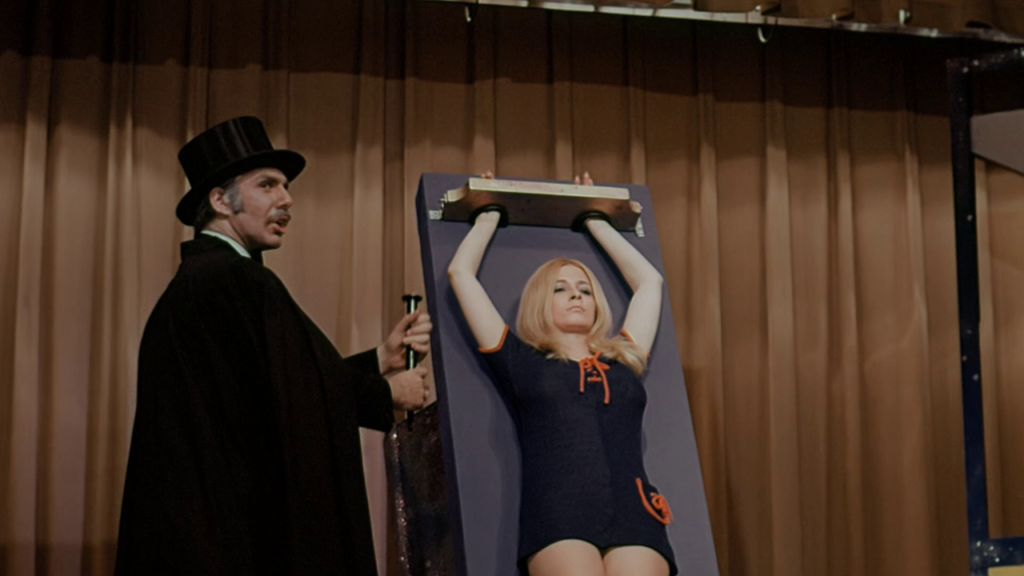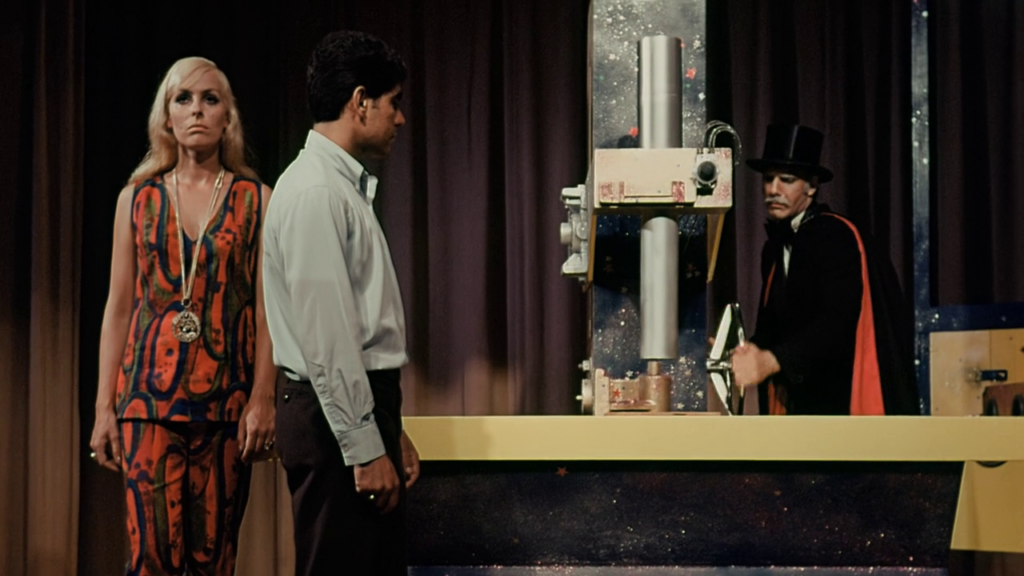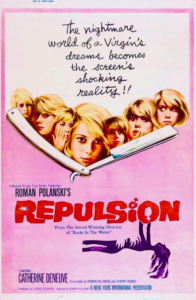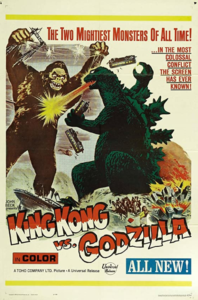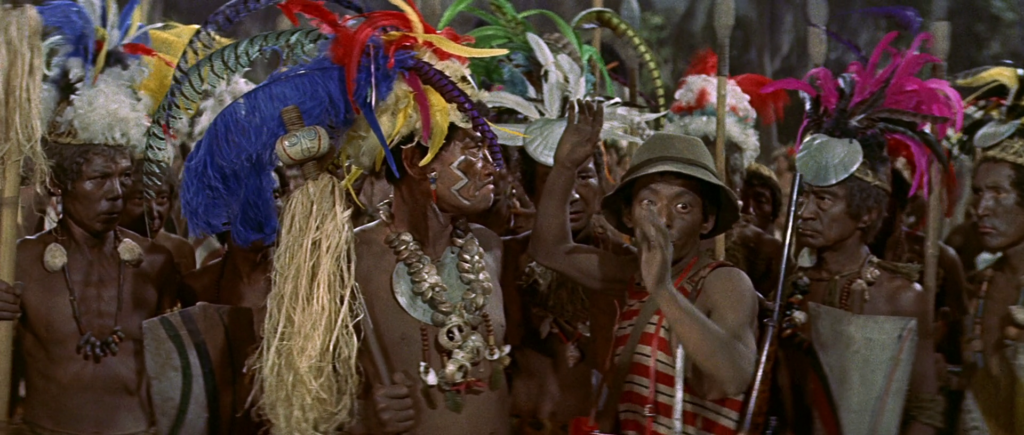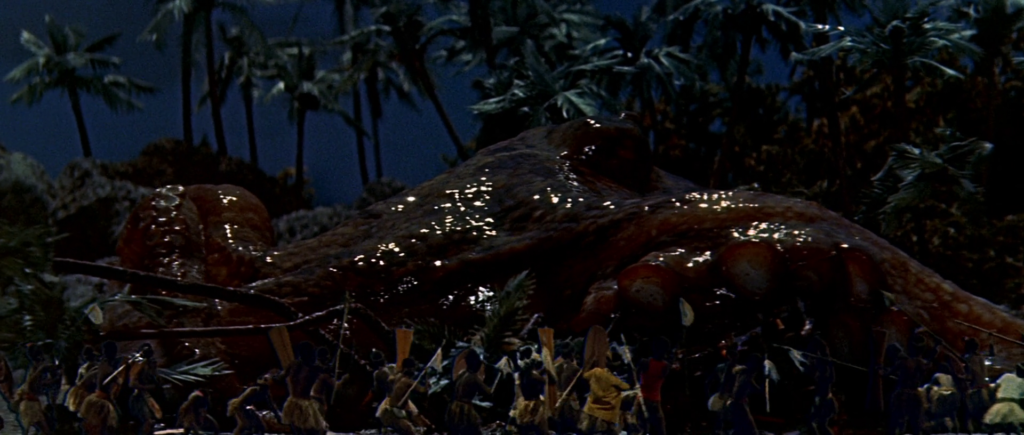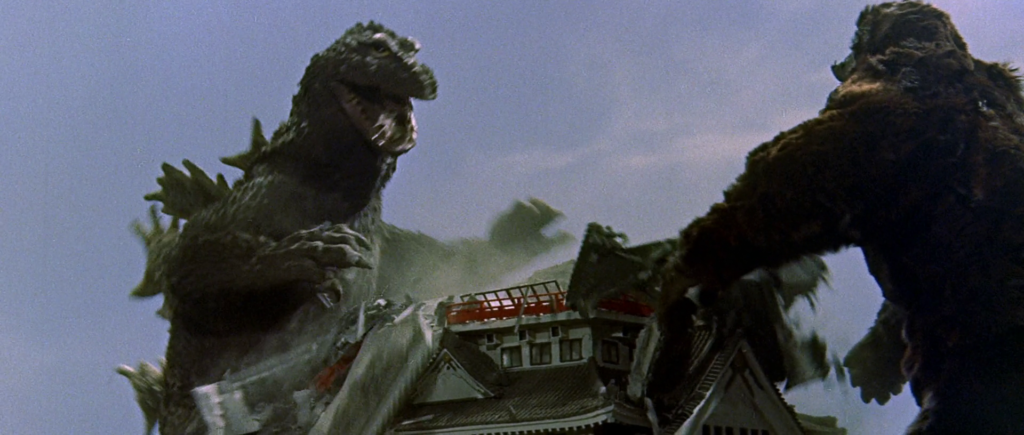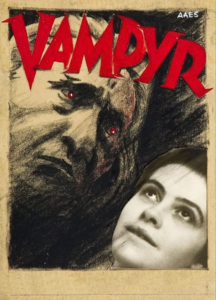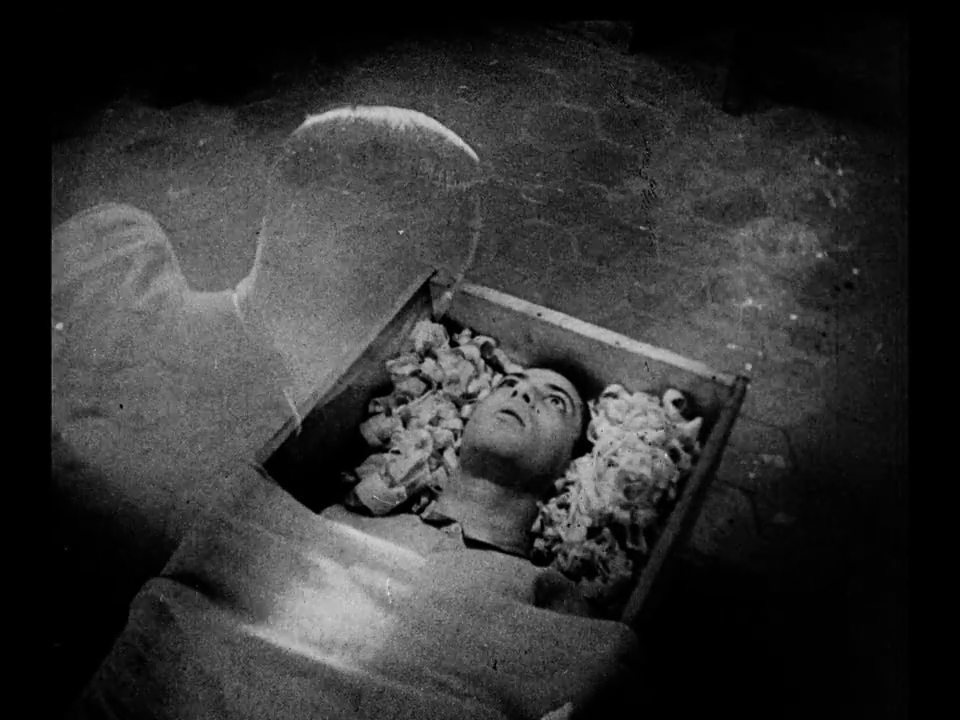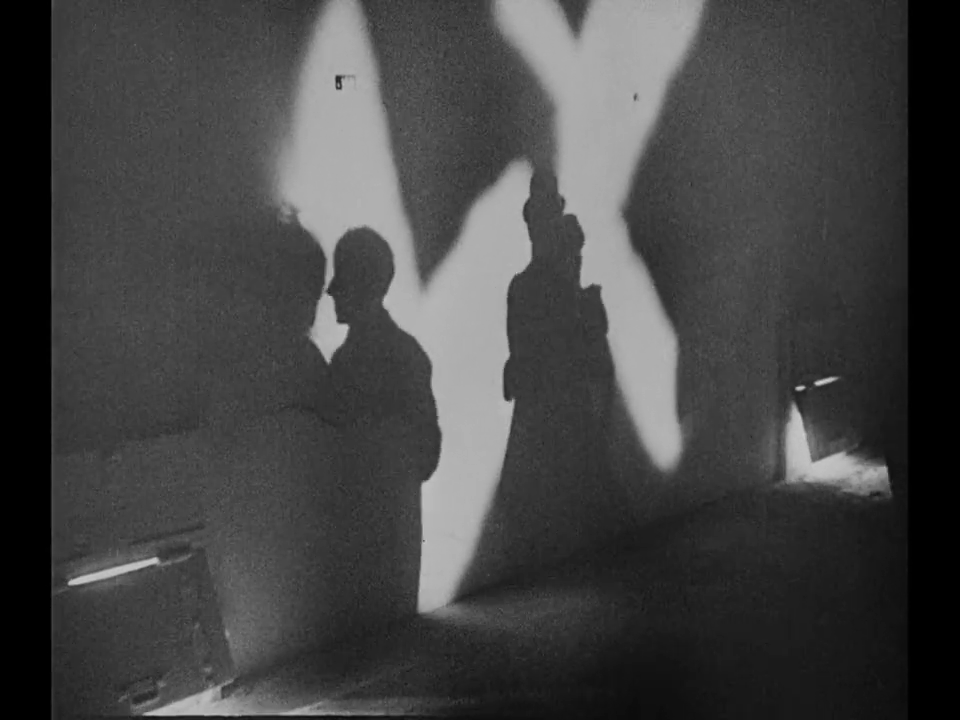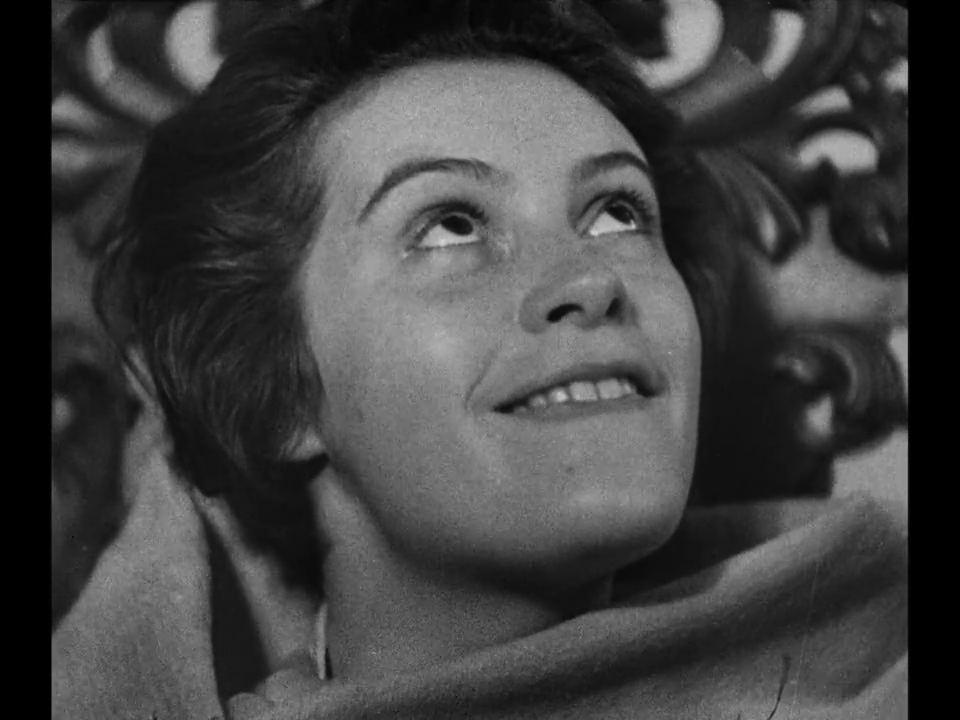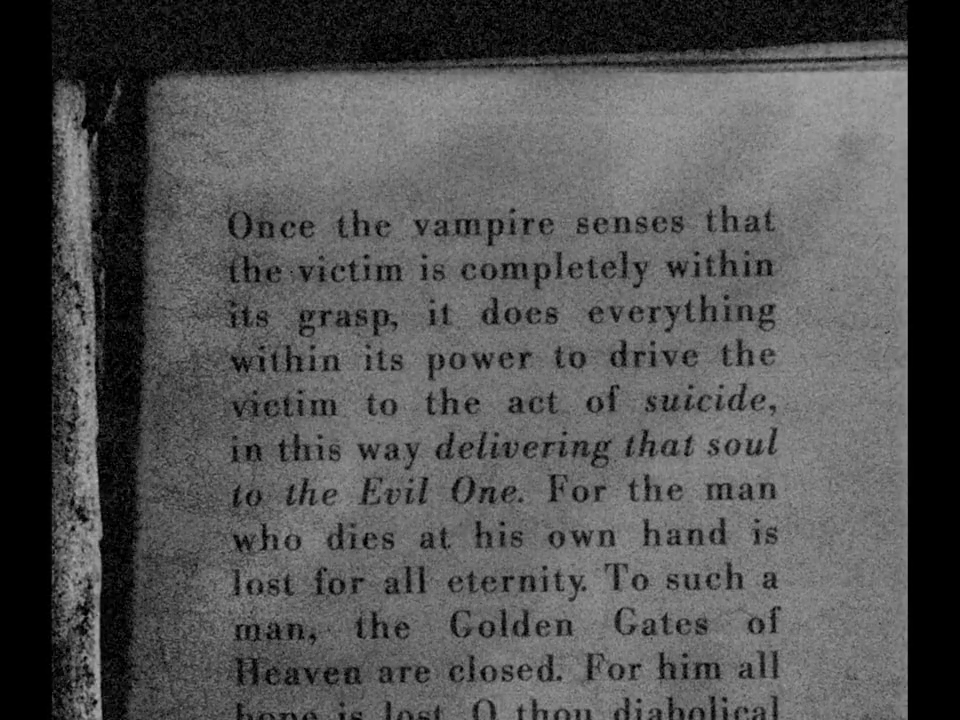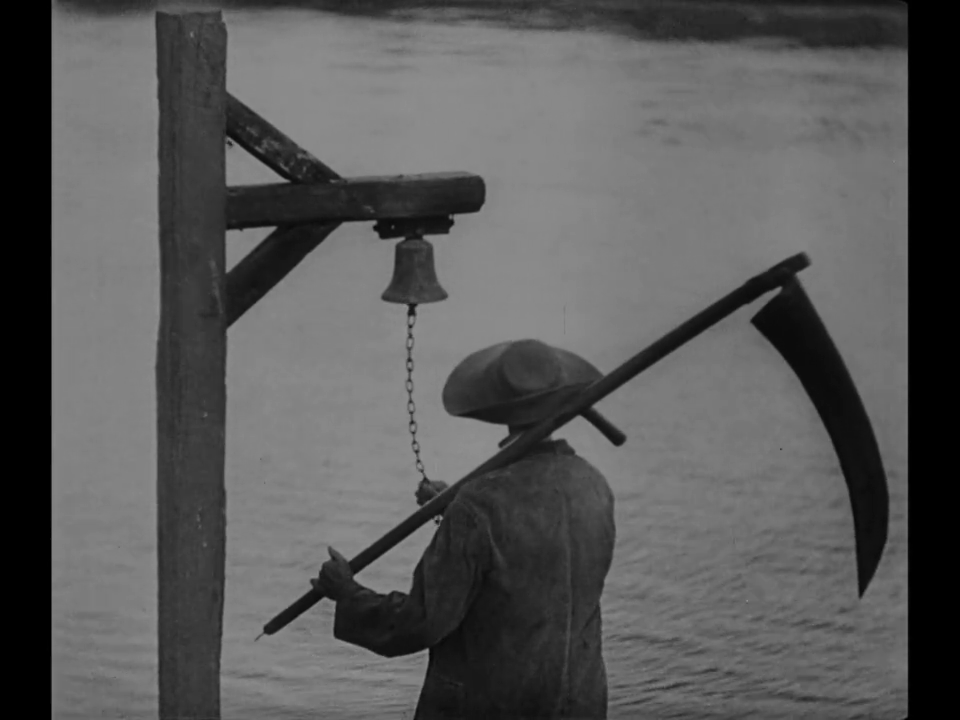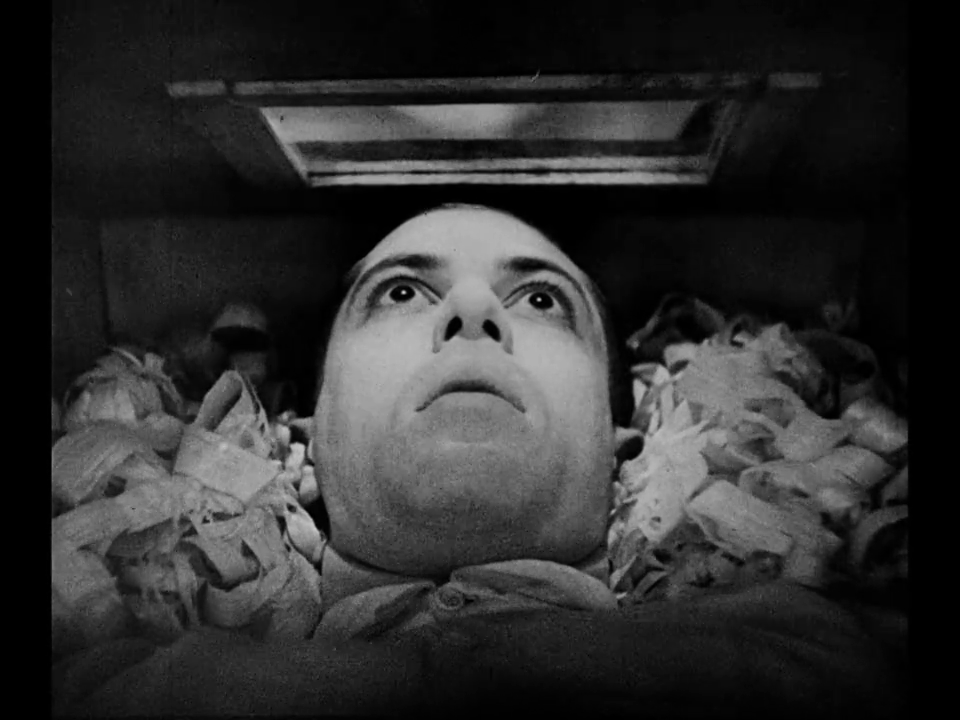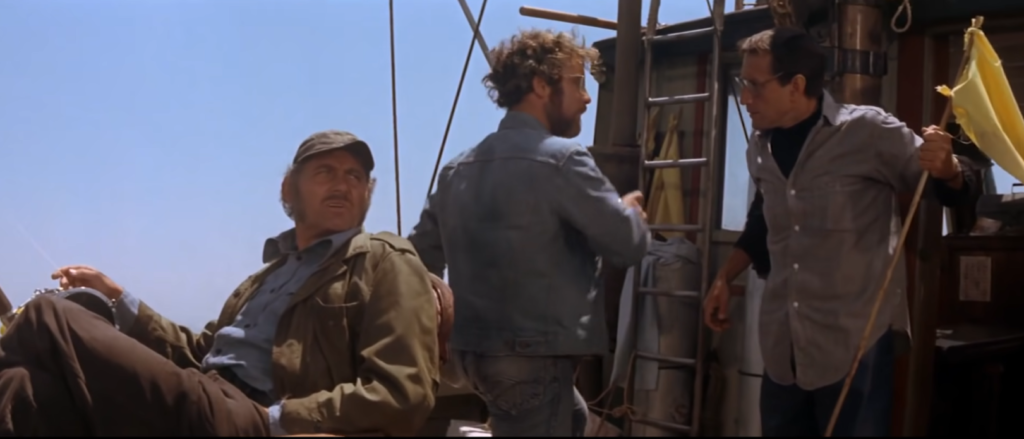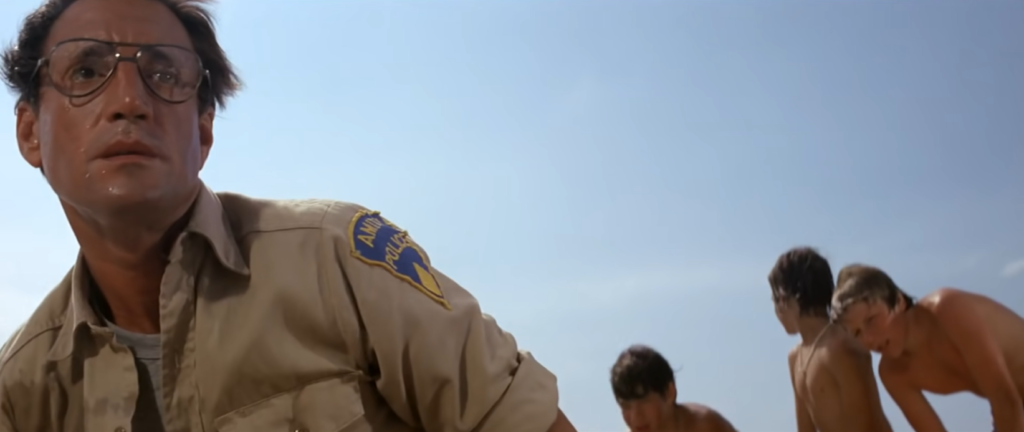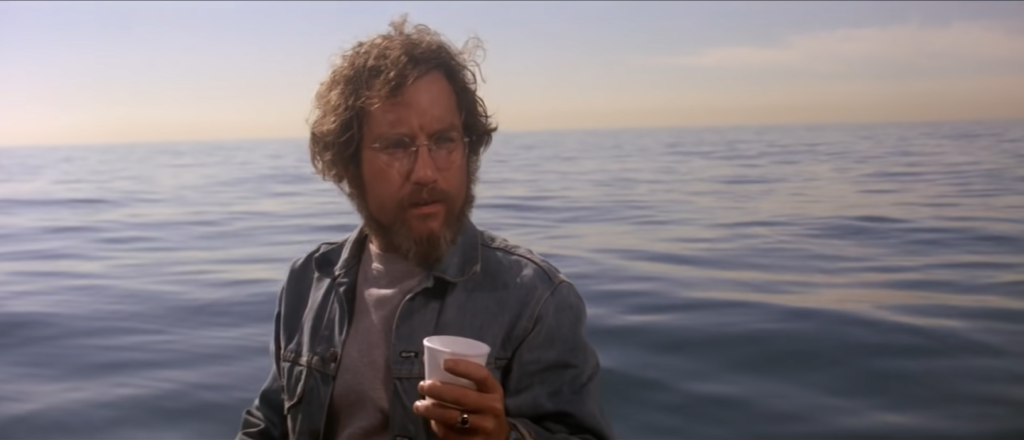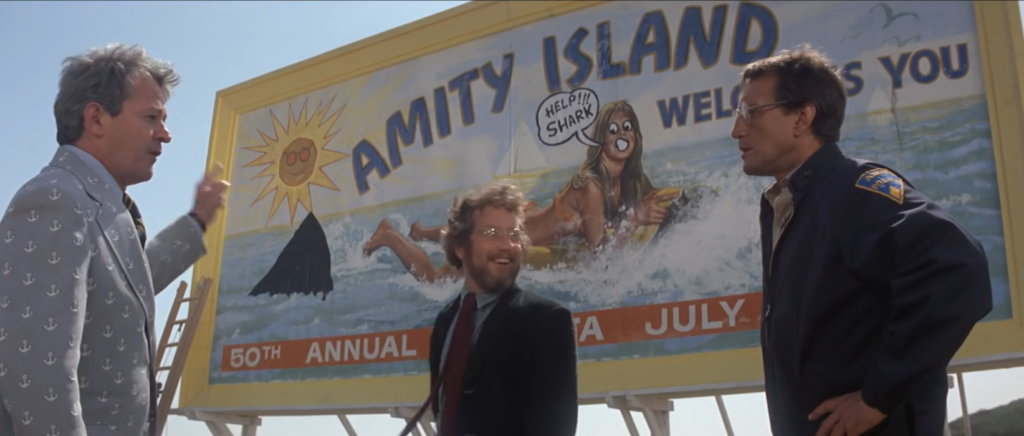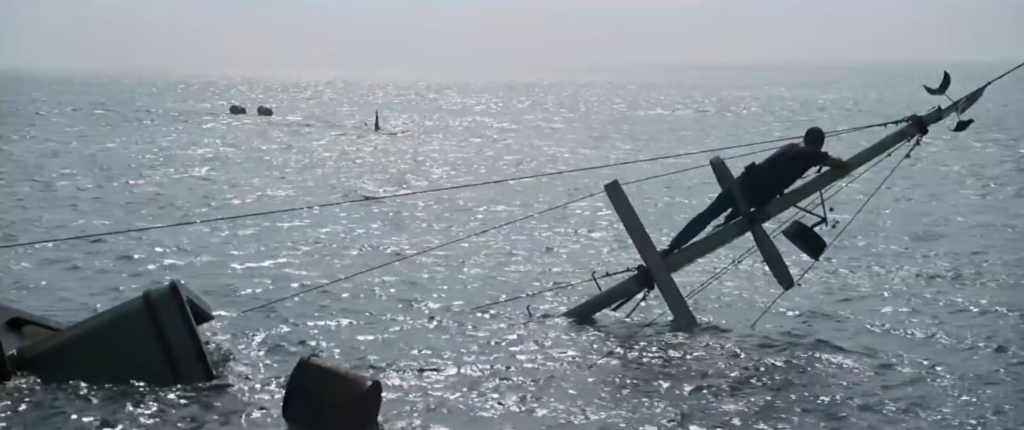|
Genres, Themes, Actors, and Directors:
- Catherine Deneuve Films
- Mental Breakdown
- Psychological Horror
- Roman Polanski Films
- Sexual Repression
Response to Peary’s Review:
Peary’s review of this “classic psychological horror film” by Roman Polanski consists primarily of a summary of Deneuve’s gradual mental breakdown throughout the film: she is “disturbed by the constant presence of her sister’s boyfriend… and their lovemaking at night”:
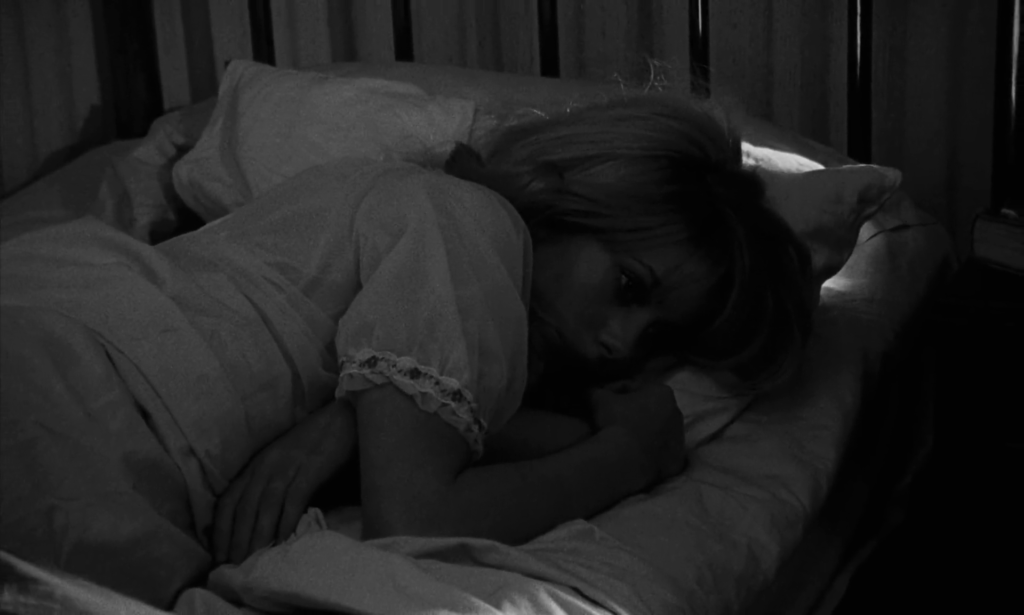
… “taken aback by the rude remarks made by construction workers as she goes to and from work”:
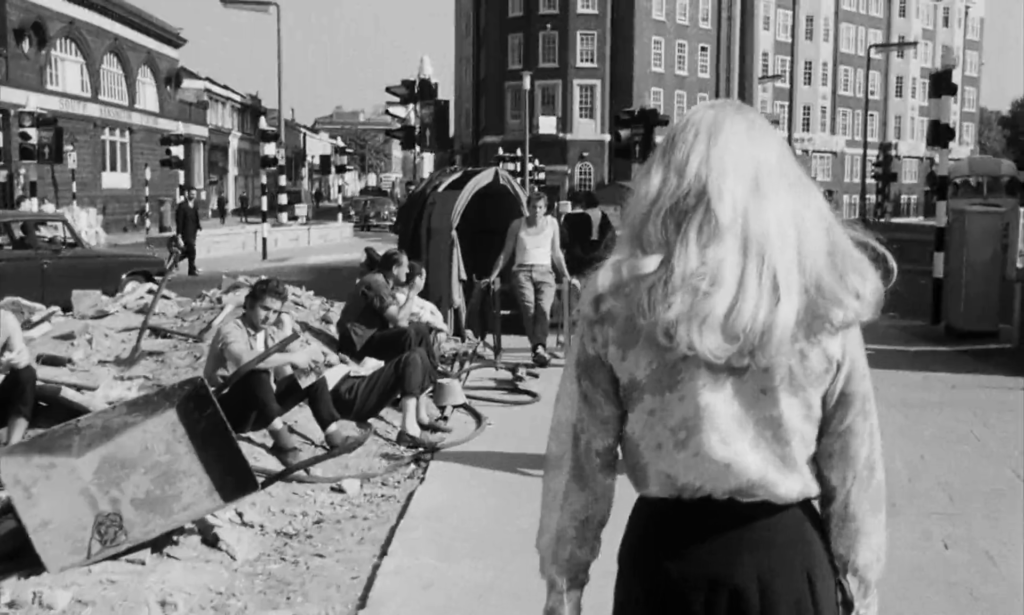
… and feels so ill after “a young suitor… kisses her” that “she goes home and brushes her teeth”.

However, it’s when “Furneaux goes out of town for two weeks” that Deneuve’s “mind completely deteriorates.”
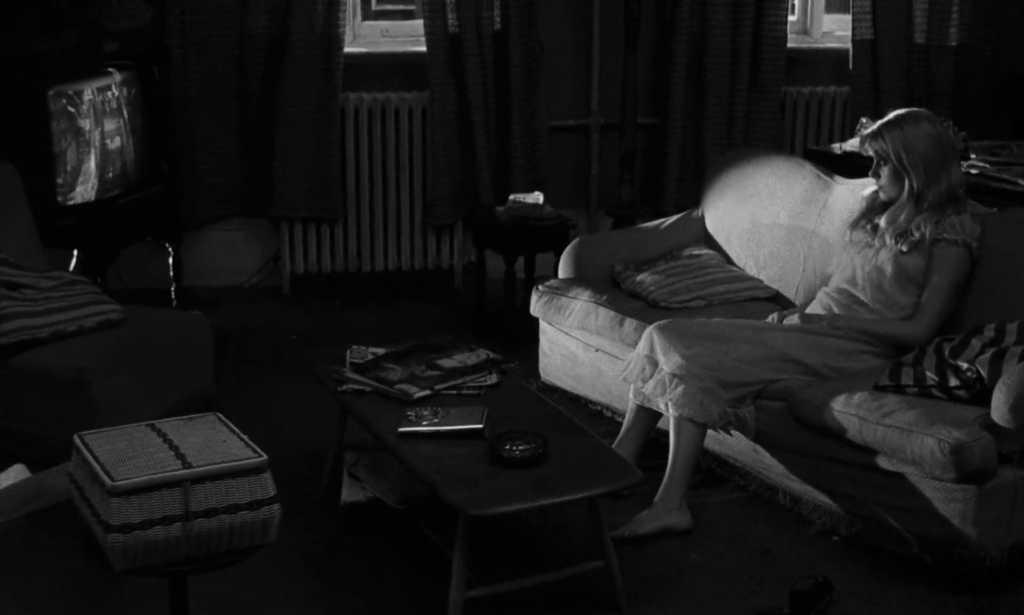
She “begins to imagine that men are breaking into the apartment and raping her”:
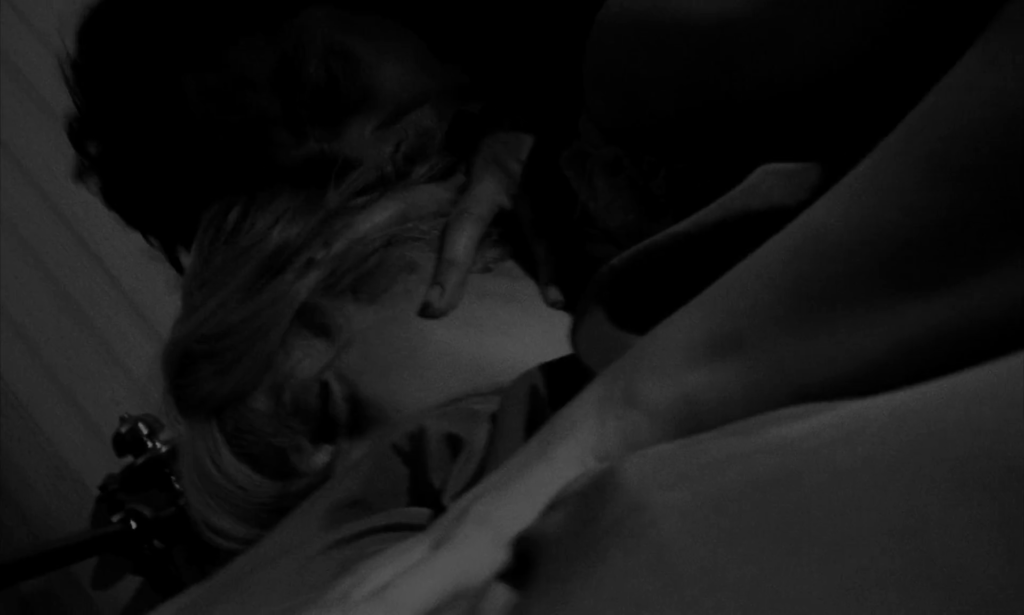
… and that “walls [are] cracking” and “hands [are] shooting out of the walls to caress her.”
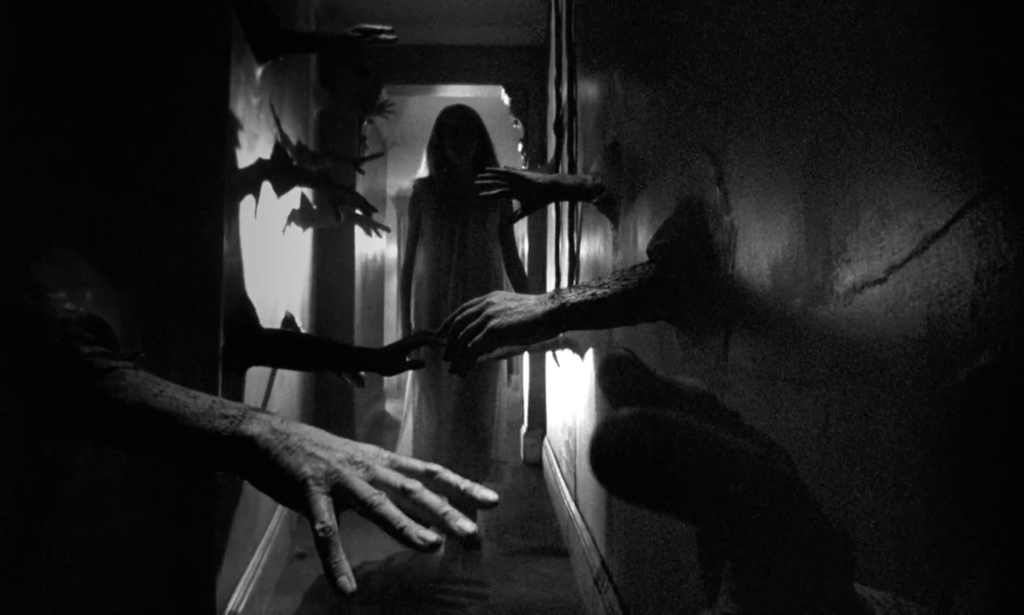
Peary notes that this “unforgettable film” is differently scary from Psycho in that “we identify with the insane murderer” rather than the victims — and he points out that it’s “not for the squeamish.”
A number of other reviewers have provided insightful remarks about this “landmark” film which “helped to re-establish the primordial power of the genre and its thematic and emotional complexities.” As James Hendrick writes in his review for Q Network:
After the 1950s had turned horror into something of a joke via teen-cheapie drive-in staples and Abbott and Costello comedies, the 1960s was a decade of reinvention, starting with Psycho and culminating with Repulsion and George A. Romero’s Night of the Living Dead (1968), three psychologically dense, visually inventive, and thematically rich explorations of what scares us most, which always amounts to some drastic collapse of what we consider “normal.”
Along similar lines, Richard Scheib of Moria writes that:
A recurrent theme of Roman Polanski’s work, particularly his horror films, seems to be paranoia, of protagonists finding the familiar around them suddenly turned strange and obliquely sinister. Polanski’s evocation of paranoia is always intensely subjective, something he frequently suggests could just as easily be being imagined by his protagonists.
Finally, DVD Savant notes:
Repulsion synthesizes elegant visions from Cocteau fantasy and Val Lewton horror to chart [Deneuve’s] headlong fall into the pit. By the time the film resorts to overt Guignol, we’re locked in a horror landscape with rotting corpses and murders by straight razor.
He further comments on the film’s memorable ending, comparing it with Psycho by noting:
When all is said and done, Polanski offers a clue to the mystery of the catatonic Carol [Deneuve] with the use of an extreme zoom into a family photo. This compromise for viewers in need of closure is a major improvement on Hitchcock’s epilogue with the psychiatrist. The big mystery is why Stanley Kubrick would copy it so lazily for his later The Shining.
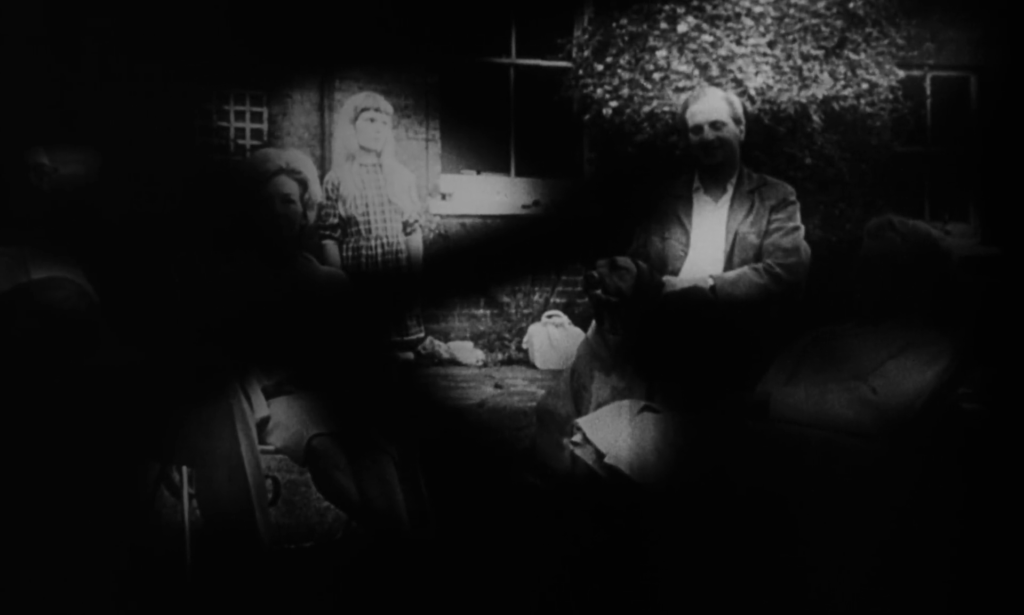
Touché.
In his Alternate Oscars, Peary names this film Best Picture of the Year (with no other contenders). He writes that while the Oscar-winning The Sound of Music (1965) “still affects millions of viewers emotionally, thanks mostly to [Julie] Andrews”, he prefers the performance of “another blonde, France’s Catherine Deneuve”: “While Andrews brought sunshine into people’s lives on- and offscreen, Deneuve gave the year’s darkest portrayal as a psychotic young woman who literally tries to brush sunlight away.” He notes that today, Repulsion “seems more unnerving than terrifying — although viewers still jump when they see the fantasy man’s reflection in the mirror.”
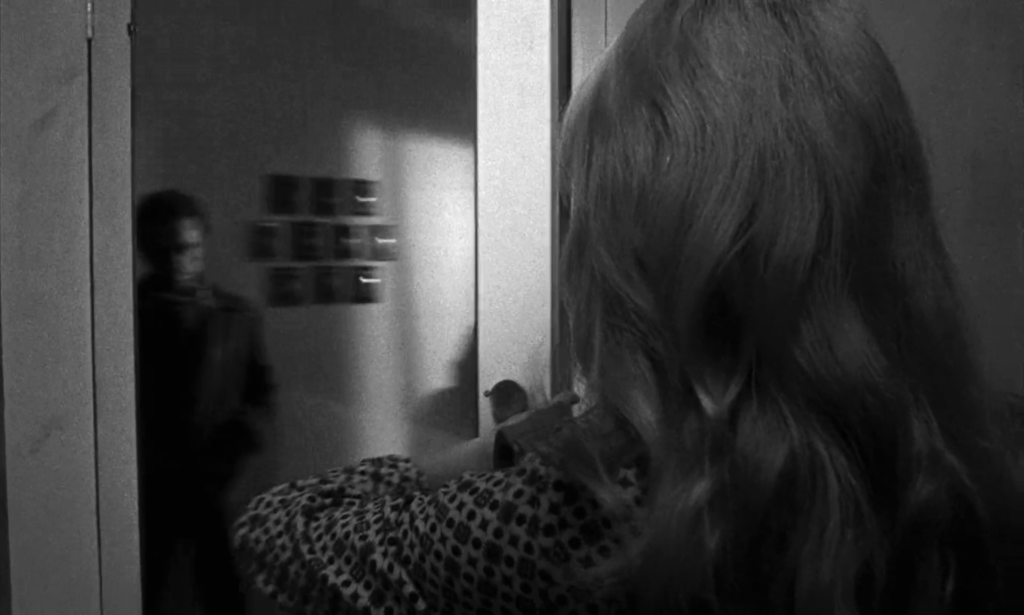
Indeed, Repulsion “remains fascinating as an erotic psychological thriller; an enigmatic portrait of a woman who sinks into madness; and an early look into the macabre mind of Roman Polanski” — who “based his heroine on a woman he knew, who seemed quiet but was prone to inexplicable moments of violent behavior.” Peary adds, “As he would do in later films, the Polish-born director, whose one previous feature was Knife in the Water, placed his main character in a bewildering, inhospitable setting” which “is a fit landscape for a breakdown.” Deneuve’s Carol is unknown to all, including her older sister, who “isn’t at all like her.” Meanwhile, “at a cosmetics clinic” Carol “is employed by an ugly, older woman to give manicures to equally grotesque, equally old women whose faces are covered with grease and mud.”

While Carol “can’t deal with sex,” “everything she hears in the shop is about men (being beasts) and everything she sees has sexual connotations” (not surprising, given how sexualized she is by nearly every man who sees her) — and while everyone she knows gets “the urge to take care of Carol, as if she were a child,” they all “in some way turn against her or become aggressive toward her.” Carol exists “in a sad world in which no one offers to help” and “no one recognizes [her] problem or makes a real attempt to understand what is wrong.” Peary writes it’s “little wonder that reality and illusion merge in Carol’s troubled mind.” While apparently “some critics chastised Polanski for his depiction of ‘woman as man-killing monster’,” I agree with Peary that “Carol doesn’t represent evil” — instead, “Polanski treats her extremely sympathetically.”
Redeeming Qualities and Moments:
- Catherine Deneuve as Carol
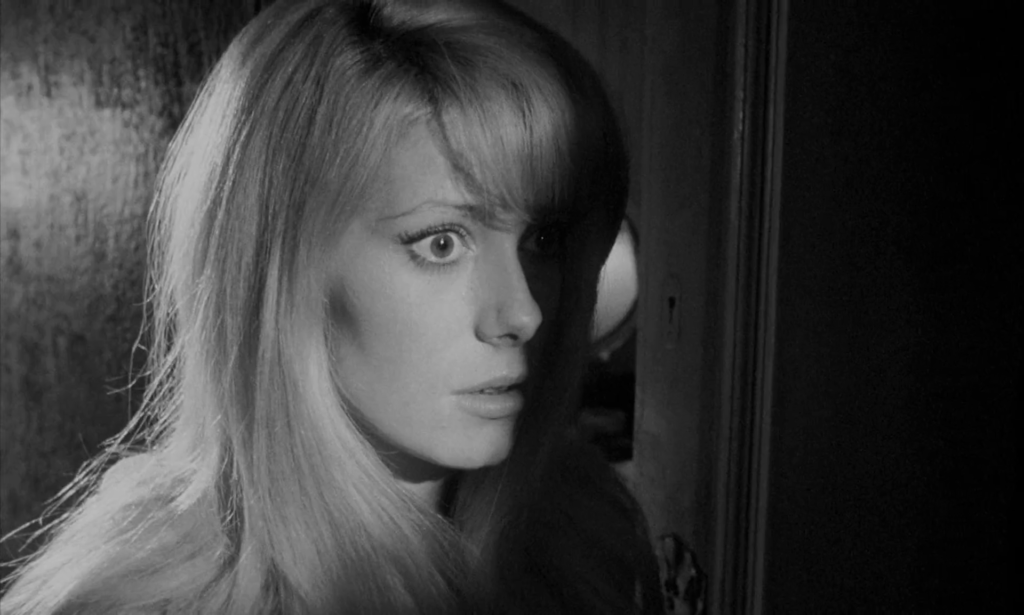
- Gilbert Taylor’s cinematography

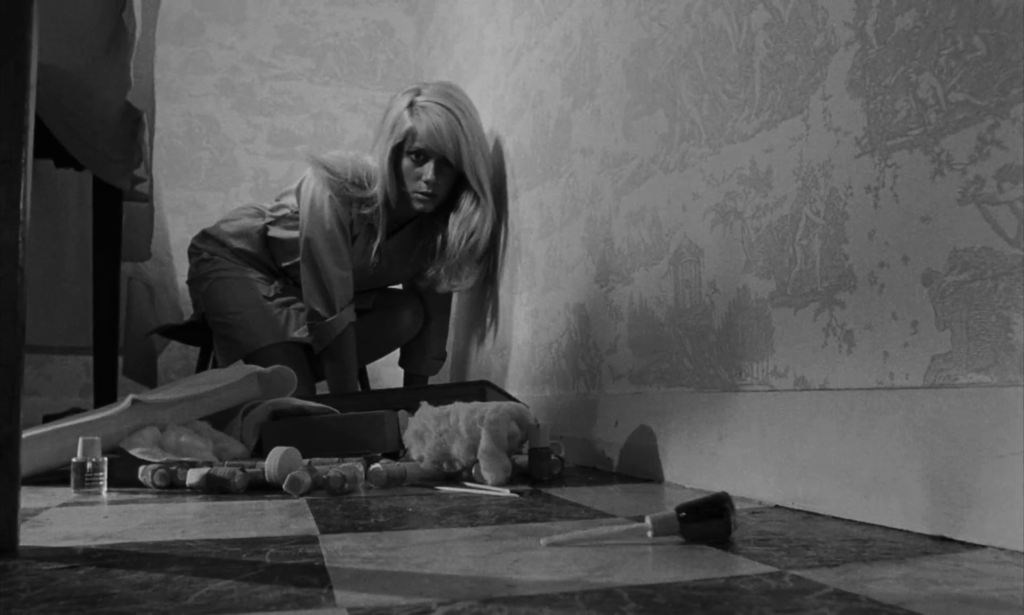
- Numerous frightening moments
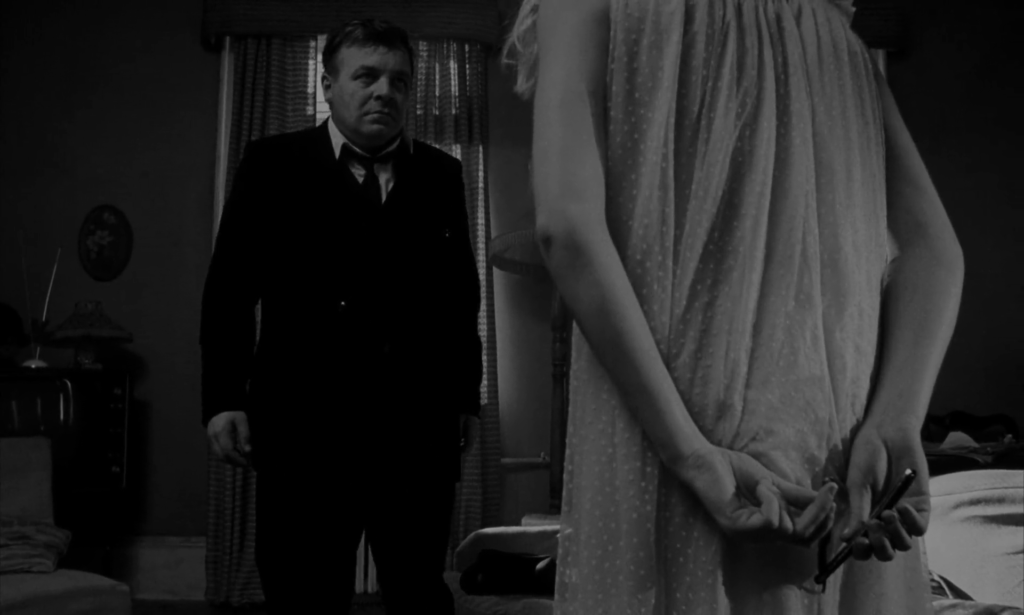
Must See?
Yes, as a now classic psychological horror film by a master director.
Categories
- Genuine Classic
- Important Director
(Listed in 1001 Movies You Must See Before You Die)
Links:
|

